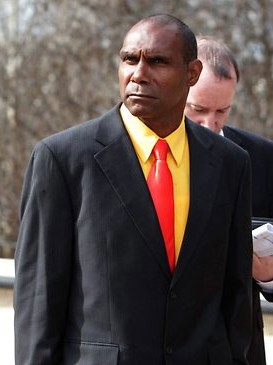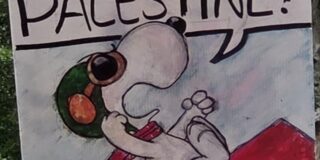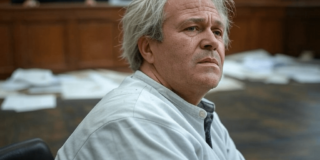Liberté, égalité, fraternité; the national motto of France, indeed the emphasis on Fraternité during the French Revolution led Olympe de Gouges, a contemporary French playwright, political activist and journalist, to write the Declaration of the Rights of Woman and the Female Citizen shortly after the French constitution of 1791 was created. She was alarmed that the constitution, which was to promote equal suffrage, did not address, nor even consider, women’s suffrage. The Constitution gave that right only to men. It also did not address key issues such as legal equality in marriage, the right of a woman to divorce her spouse if he abused her, or a woman’s right to property and custody of the children. So she created a document that was to be, in her opinion, the missing part of the Constitution of 1791, in which women would be given the equal rights they deserve. It’s worth noting that Olympe was guillotined by the French Republic on 3 November 1793 for her efforts at bringing their shortcomings to the public’s attention!
Citizenship
In one important aspect at least, what Olympe de Gouges was mulling in her Declaration of the Rights of Woman and the Female Citizen was what it means to be a citizen. Citizenship is a concept with a long history in political science and its origins can be traced back to debates between Aristotle and Plato over how an Athenian citizen should act. Through the millennia, however, the term has acquired multiple meanings. This may, in part, reflect the importance of the idea of citizenship, so that scholars and political analysts compete to define its meaning.
In essence I see the term citizenship as tapping what is expected of the public as ‘good’ citizens. Reflecting Gabriel Almond and Sidney Verba’s (1963) description of a political culture as a shared set of social norms, this study defines citizenship norms as “… a shared set of expectations about the citizen’s role in politics.” A political culture contains a mix of attitudes and orientations; I see these images of the citizen’s role as being a central part of a nation’s culture. They tell citizens what is expected of them, and what they expect of themselves. These expectations shape citizens’ political behaviour. Indeed, these norms of citizenship include many of the values that Almond and Verba stressed in defining a civic culture.
This does not mean that individuals approve of these norms, or that their personal values are consistent with them. The interaction between these norms and behaviour is, in fact, an important research question to consider. For instance, someone might say that tolerance is an important norm for a democratic citizen – but then not be tolerant in his or her own political beliefs. In short, I define citizenship as a set of norms of what people think people should do as good citizens.
If citizenship is indeed a set of norms of what a society thinks people should do as good citizens, these norms are in themselves products of generally held beliefs within the wider community, beliefs that define the citizen and the nation. From my perspective as an Indigenous Australian, what is important to me as well as many of my indigenous brothers and sisters is the set of norms of what people think of Indigenous Australians, and how these norms were formed and how they are continually reinforced by a racist and facile media and political elite.
Beautiful One Day
As a treat following a series of adverse health issues I have suffered following the KKK style “mock lynching” I was forced to endure earlier last year (2012), my PhD supervisor took me to see the second last performance of Beautiful One Day at the Belvior Street Theatre in Sydney. Beautiful One Day is a play about the events leading up to and following the death of Cameron Doomadgee (also known as Mulrunji) while in police custody on Palm Island on Friday, 19 November 2004, a death for which no one has yet been held accountable. The death of Mulrunji led to civic disturbances on Palm Island and a legal, political and media sensation that continued for three years culminating in the first time an Australian Attorney General has indicted an individual for a criminal trial since the public prosecutor’s office was established, and the first trial of an Australian police officer for a death in custody. The officer was acquitted by a jury in June 2007.
While seated in the audience next to Herr Professor and his good wife, a loudly dressed young Aboriginal woman lurched into center stage and began regaling, or berating would perhaps be a better word, the audience for an alleged injustice she had experienced while drinking with friends at the Clock Tower Hotel in Crown Street, a local watering spot, the night before. Yes, it was all part of the production, but for me it was central to the whole issue of Aboriginality and citizenship.
As our young and loudly dressed (all part of the stereotype) heroine lurched into center stage she began a powerful diatribe about being accused of stealing a white girl’s purse while drinking at the Clock Tower Hotel. The diatribe enumerated all the racism and prejudice that were implicit in the accusation and the actions of the management and other guests that followed. The end result, the white girl’s purse was found under her seat, where she had left it while drinking with her friends.
The reason this entrance was so powerful, at least for me, was its realism. It portrayed – in artistic form – a reality that every Indigenous Australian experiences every day of their lives, a reality that we call racism or prejudice, but which I see as a denial of citizenship and freedom. If this fictional incident was real and the the accused was say, a Jew or a Muslim or worse a white, the media and lawyers would have been all over it. Why? Because all of these groups have social and political power that comes in part from being citizens; we as Indigenous Australians have no social or political power. Why? Because the reality is that we are not really seen as being citizens, a view that is continually being reinforced by the our negative portrayal in the media, by our so called political elite and by the child-like prohibitions imposed on our brothers and sisters in the Northern Territory under Australia’s very own Apartheid scheme known as the Northern Territory Intervention.
Mulrunji
Let’s stop and go back a little, back to the actual focus of Beautiful One Day, back to Mulrunji, an Indigenous Australian who was aged 36 when he died. The actual time of Mulrunji’s death was about 11:20 am by white mans reckoning, one hour after being picked up for allegedly causing a public nuisance.
Mulrunji was placed in the two-cell lockup which was the back section of the Palm Island Police Station. Fellow Palm Islander Patrick Bramwell was placed in the adjoining cell.The arresting officer’s were Senior Sergeant Chris Hurley and the indigenous police liaison officer, Lloyd Bengaroo, who were both flown off the island the following Monday after receiving death threats and after Chris Hurley’s house was burned down. Hurley was amply compensated for his losses by the public purse.
Mulrunji’s was the 147th death of an Aboriginal person in custody since the handing down of the 1990 Royal Commission.An autopsy report by Coroner Michael Barnes was produced for the family one week after the death. It stated that Mulrunji had suffered four broken ribs, which had ruptured his liver and spleen, it also found that the body’s blood alcohol content was 0.29 from a cocktail of alcohol including methylated spirits mixed with sweet cordial. The family of the deceased was informed by the Coroner that the death was the result of “an intra-abdominal hemorrhage caused by a ruptured liver and portal vein”.
According to residents and relatives as reported in the media, Mulrunji visited his new baby niece early on the morning of 19 November 2004, He was drinking beer at the time but was not considered to be drunk. He was carrying a bucket with a mud crab which he was going to sell. He then walked from his mother and sister’s house to “D” Street where he was picked up. Reports indicate that he was walking along the street singing “Who Let the Dogs Out?” when Senior Sergeant Chris Hurley drove past.
Chris Hurley is a Caucasian Australian who was also aged 36 at the time of the incident was tried and acquitted of the manslaughter of Mulrunji in 2007, admitting that his knee may have come into contact with Mulrunji’s stomach in a complicated fall.
In dealing with this issue, the Queensland Court of Appeal observed:
The Coroner said that “[t]he consensus of medical opinion was that severe compressive force applied to the upper abdomen, or possibly the lower chest, or both together, was required to have caused [the] injury” to the deceased’s liver and portal vein.
But none of the medical evidence supported the further finding that the punches spoken of by Mr Bramwell were likely to have supplied the compressive force said to be necessary to cause the rupture of the deceased’s liver and portal vein. Indeed, the uncontroverted medical evidence was to the contrary, yet this evidence was not adverted to by the Coroner. It will be necessary to refer to the Coroner’s reasons at some length to demonstrate that this is so. But before we refer to the relevant passage in the Coroner’s reasons, it is necessary to refer to the uncontroverted medical evidence which was before the Coroner.
In this regard Dr Ranson expressed the opinion in his report that three “jab-like punches” described by Mr Bramwell would not have been able to generate sufficient force to rupture the deceased’s liver and portal vein. His opinion was not disputed by any party at the inquest. None of the other doctors who gave evidence offered a contrary opinion. The other medical evidence was to the effect that, whatever the nature of the contact between Mr Hurley’s body and the body of the deceased, it was necessary that the full weight of Mr Hurley’s body needed to be behind the blow in order to cause internal injuries of the kind suffered by the deceased. Dr Lampe thought that a blow with a knee or a torso with the weight of Mr Hurley’s body behind it might have carried sufficient force to inflict the fatal injuries suffered by the deceased; and Dr Lynch was of a similar view.
…………………………………………………..
We conclude that the finding of the Coroner that punching by Mr Hurley caused the fatal injuries sustained by the deceased was not reasonably open on the evidence. Accordingly, the decision of the District Court that this finding of the Coroner should be set aside was correct even though the process of reasoning whereby his Honour arrived at that decision was flawed. (My emphasis)
On 6 May 2010 the Courier-Mail in an article about a Queensland Crime and Misconduct Commission report into the death of Mulrunji stated that:
The report claims the people of Palm Island, the wider indigenous community and the “public generally” have been let down. And it is set to be particularly critical of the apparent failure of investigating officers to be seen as impartial.
The CMC is understood to have found the investigation into the death of Doomadgee, also known as Mulrunji, was seriously flawed and its integrity gravely compromised in the eyes of the community.
Fatal injuries, evidence of an assault, flawed investigation, lack of impartiality, no police officer held accountable for the death of an Indigenous Australian in police custody … this sounds like corruption. But wait – the police and the government say there is no corruption, we need to trust and have faith in the system. No corruption they say; what then? The only possible alternative answer is that we (Indigenous Australians) are not really citizens in terms of the accepted norms of Australia’s so-called democracy. If we are not citizens, what then are we? More importantly, if we are not citizens do we have a right, indeed a duty to ourselves to appeal to the international community to intervene on the basis that we are in fact, if not in law, an occupied people, in the same way as the Palestinians or West Papuan’s?
Lex Wotton
 Mr Wotton was sentenced to six years’ jail in 2008, having been found to be a major player in the 2004 riots following the death of Mulrunji, including having poured petrol on a police station while police officers were inside. He was released on parole in July 2010 and was banned from public meetings on Palm Island without the first seeking the permission of corrective services, as well as having any interaction with the media. Mr Wotton remains the only person to have been convicted as a result of Mulrunji’s death, a death he played no part in, and guess what – he is a non-citizen – an Indigenous Australian.
Mr Wotton was sentenced to six years’ jail in 2008, having been found to be a major player in the 2004 riots following the death of Mulrunji, including having poured petrol on a police station while police officers were inside. He was released on parole in July 2010 and was banned from public meetings on Palm Island without the first seeking the permission of corrective services, as well as having any interaction with the media. Mr Wotton remains the only person to have been convicted as a result of Mulrunji’s death, a death he played no part in, and guess what – he is a non-citizen – an Indigenous Australian.
Not only was Mr Wotton forced to endure the indignity and privations associated with penal servitude for having the audacity to protest against white male sanctioned racism and corruption, his non-citizen status was reinforced by the High Court of Australia in upholding his ban on talking to or communicating with the media which formed part of his parole conditions.
In submissions tendered to the High Court on behalf of Mr Wotton, his counsel Mr Ron Merkel QC argued that the ban on talking to the media was aimed at prohibiting his client’s ability to communicate on issues of public interest, especially to the indigenous community:
All Australian jurisdictions make provision for the maintenance of the security and good order of prisons. No other jurisdiction, however, makes it a criminal offence for a person to interview or obtain a statement from the prisoner, whether in prison or on parole.
High Court judge William Gummow questioned the argument put by Mr Merkel that the role of the media was a crucial part of political communication in the Australian community. Justice Gummow said the age of the “old media” was gone and there were now irresponsible sections of the press.
Ah Justice Gummow we can at least agree on the irresponsible nature of the popular press, but as for silencing a citizen, well it just reinforces my view that we have always been and remain to this day – NON-CITIZENS!
Shall I take myself off to the guillotine or wait for the KKK styled racist thugs known as the Australian Federal Police to escort me, as a NON-CITIZEN to the fate of all NON-CITIZEN’S – trial without justice?



Indeed, it is only if you are white.